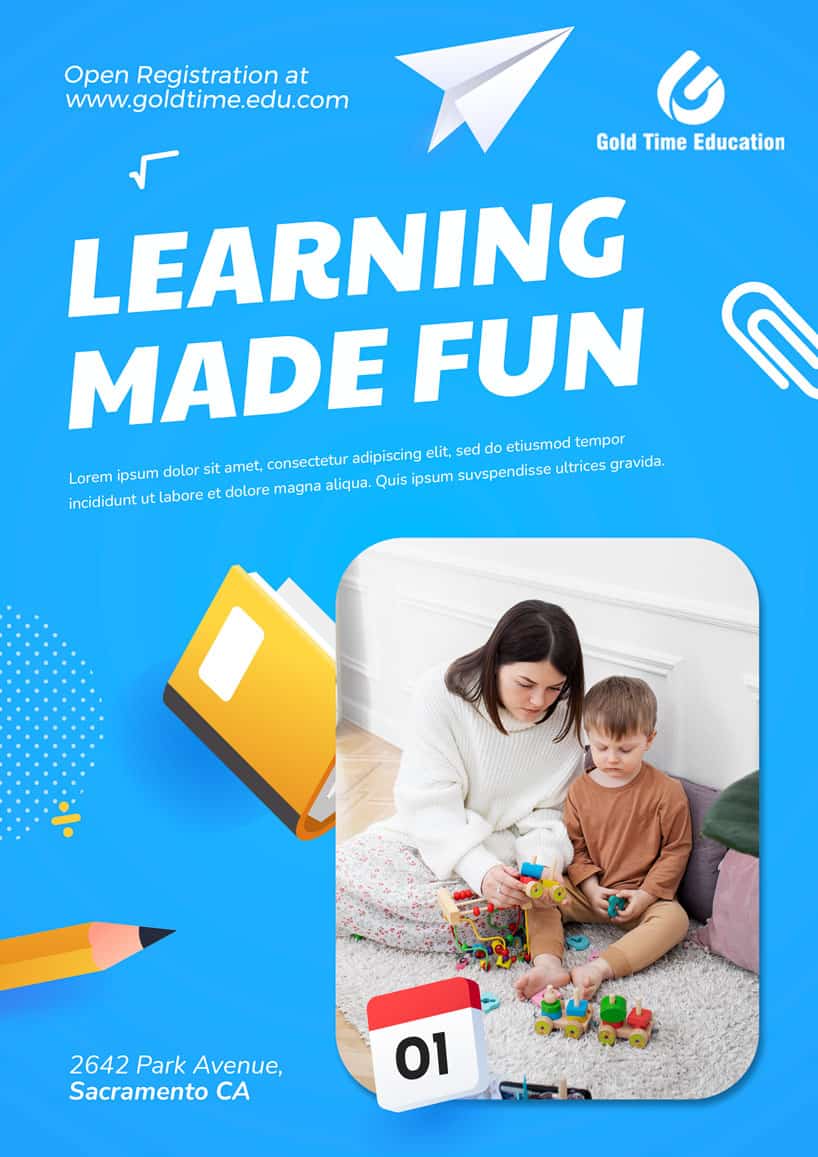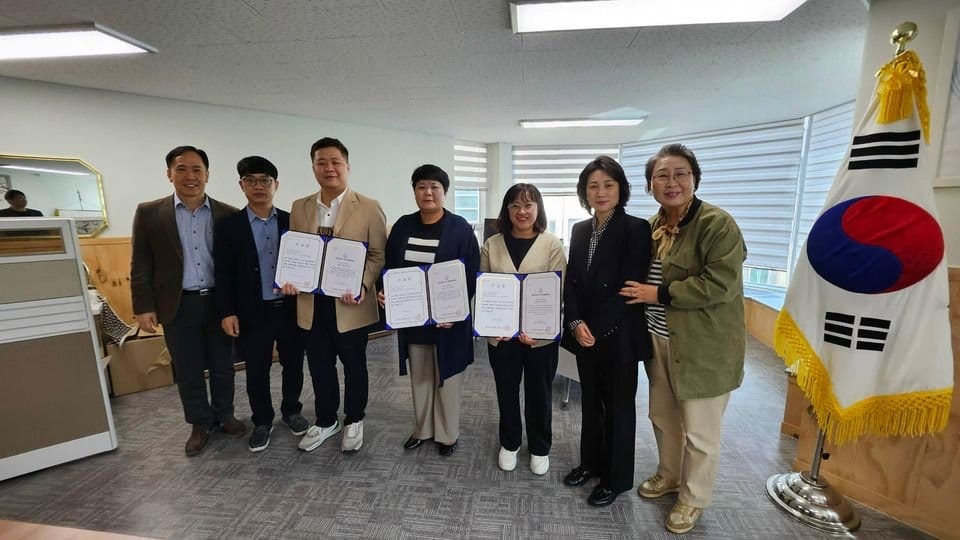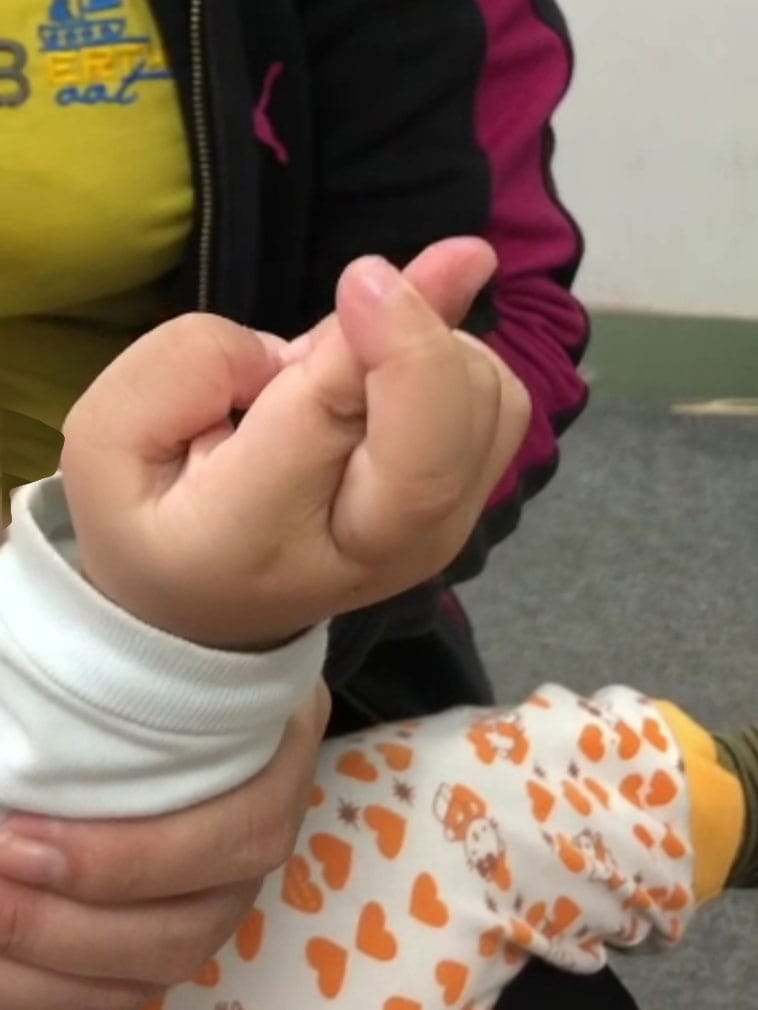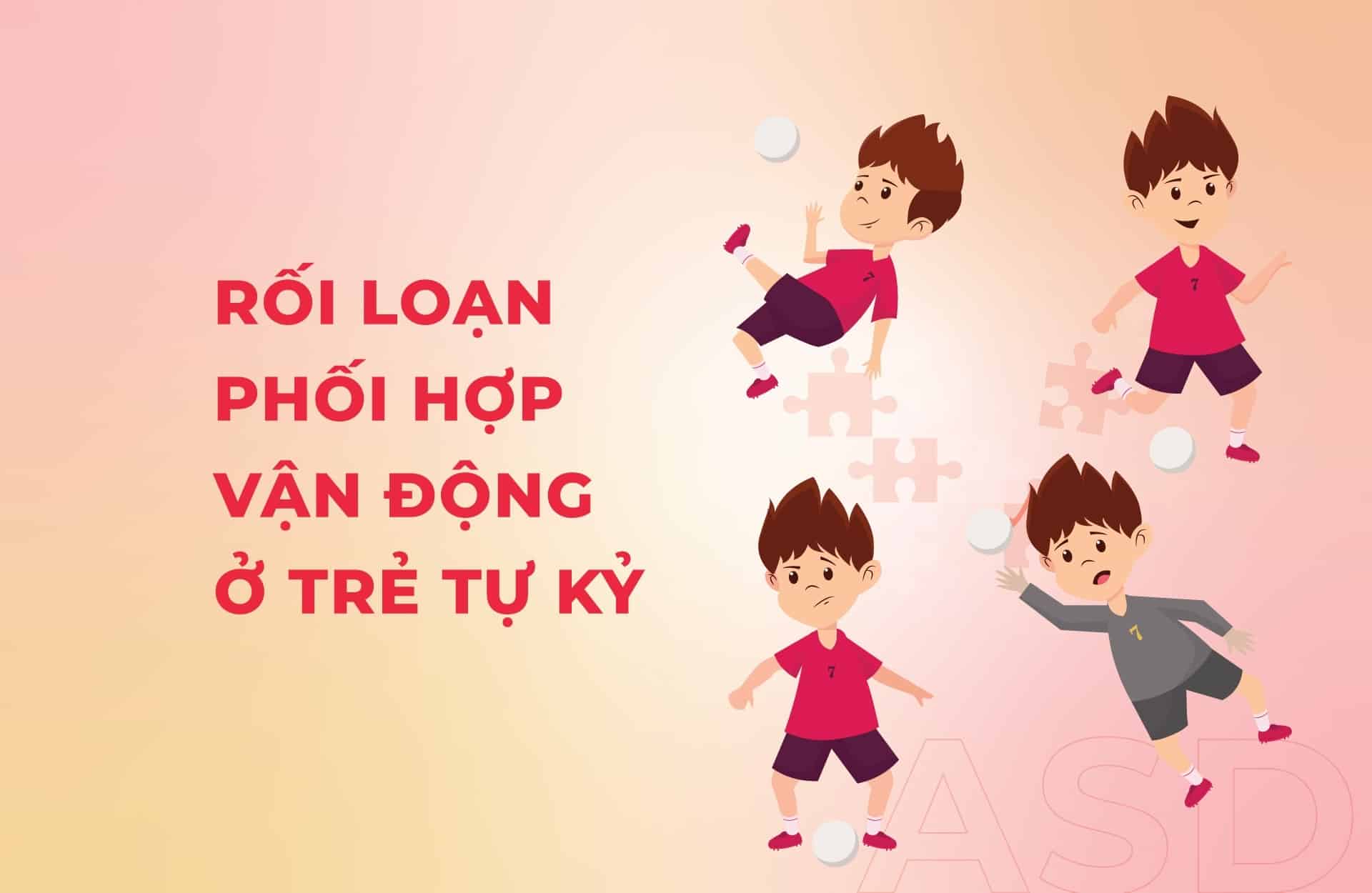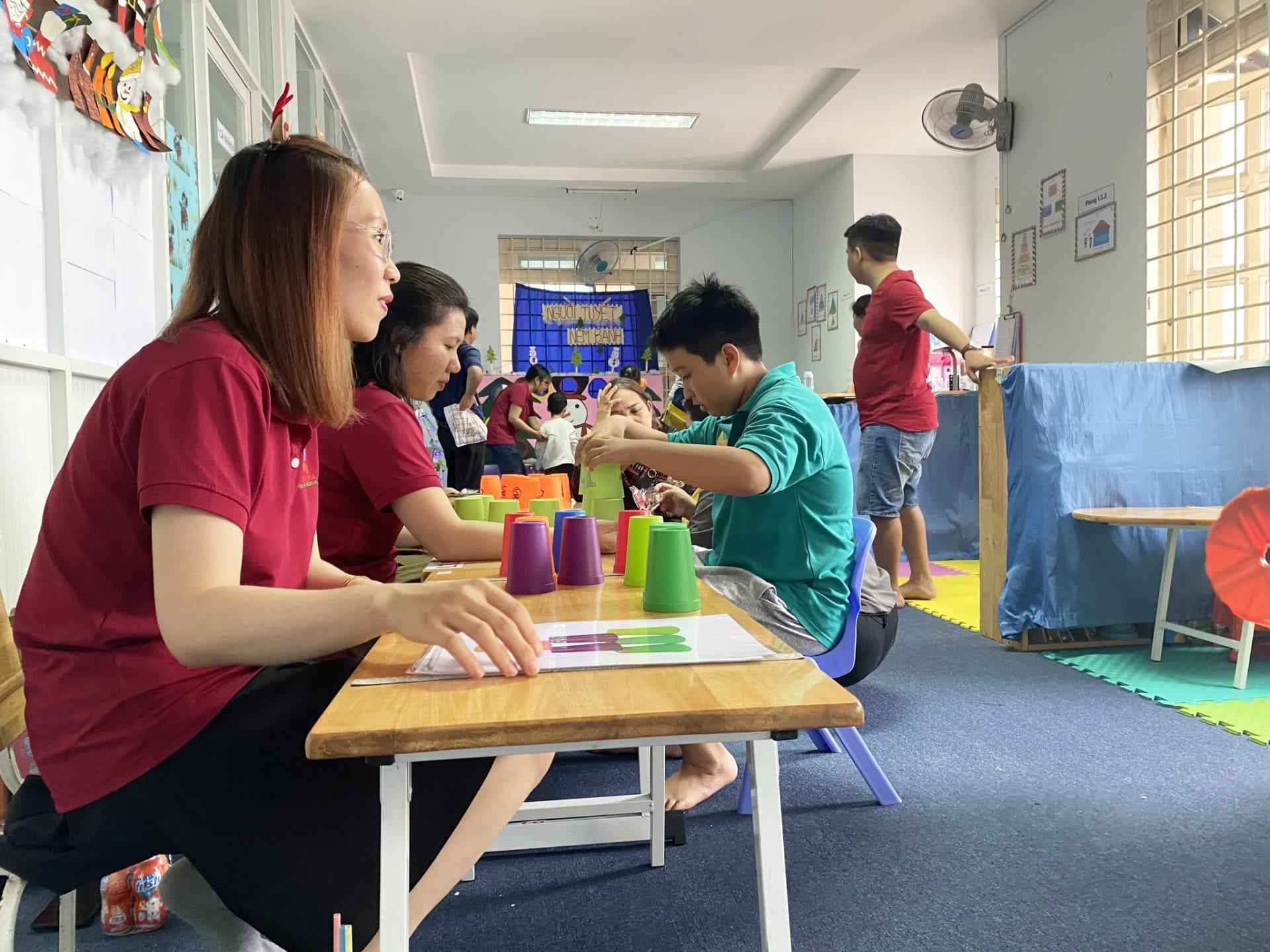1. INTRODUCTION
Autism spectrum disorder in young children is a disability caused by a complex of multiple functional disorders, so it requires not only medical intervention but also cooperation, support, and interventions in education, functional rehabilitation, psycho-social aspects… while also raising awareness for the community/family to reduce stigma and insecurities leading to negative impacts on the process of detection, early intervention, and education of children.
The establishment and organization of interdisciplinary groups in the field of assessment, intervention, and education for autistic children are essential because they bring about higher effectiveness and quality in supporting children and families. That’s why Gold Time Education was founded with its understanding and continuous learning, applying intervention models from countries in the region, developed countries; while also spreading awareness of interdisciplinary work to continuously improve the quality of intervention and create opportunities for integration for autistic children in Hanoi in particular and Vietnam in general.
2. CONTENT
2.1. Autism Spectrum Disorder
2.1.1. Nature of Autism Spectrum Disorder
Autism Spectrum Disorder (ASD) is a developmental disorder spectrum in children, including a set of developmental disabilities that can lead to limitations in social communication and behavior, language, rigid thinking, and peculiar behaviors. The term “spectrum” is used because ASDs vary widely in their manifestations and severity among children with this condition. Children with autism process information in the brain differently from others. They seem to live in their own world.
WHO defines Autism Spectrum Disorder as “a lifelong developmental disability that typically appears during early childhood. Autism is the result of a neurological disorder that affects brain function. Autism can occur in any individual, regardless of gender, race, wealth, and social status.”
Children with autism often experience pervasive developmental disorders across all age-appropriate skills:
– Rigidity in thinking, repetitive behaviors (to the point of being peculiar), obsessions, repetitions.
– Delayed or disordered language: delayed or poor language development, disordered expression, repetition of words, echoing, stuttering…
– Social interaction disorder: avoidance of eye contact, particularly increasing social interaction…
– Children with autism often have accompanying sensory disorders and hyperactivity, attention deficit disorders, sleep disorders, limited diet diversity…
– Particularly, some typical autistic children have multiple sensory disorders: fear of physical touch, dislike of hugs, fear of loud noises, fear of certain types of light…
– 70-80% have accompanying delayed intellectual development, leading to difficulties in cultural learning.
2.1.2. Effects of Autism Spectrum Disorder
Firstly, there are emotional development effects: Children with autism do not have emotions like typical children. They show early signs of emotional expression differences. They often lack the need for parents, express emotions in their own way, face obstacles in connecting with other children at school or outside the family. They don’t know how to express emotions & bond with individuals or show interest in others. They don’t understand or perceive others’ emotions, don’t know how to joke…
Effects on typical thinking ability (cognition)/psychological instability: Most autistic children receive specific, detailed information very well but struggle to grasp the big picture. Autistic children may perform well when given tasks that require attention to detail or have been specifically programmed, but lack flexibility, creativity, or adaptability. Autistic children perceive like a “camera” that knows numbers, English through YouTube play very early on, very specific visual thinking ability, strong memory and image copying skills, but sometimes lack abstract thinking. However, fundamentally about 70-80% of autistic children have low or average IQ, so they have difficulties in learning. Some high-functioning autistic individuals have special abilities in painting, music, languages. Because of cognitive issues leading to difficulties in understanding activities, psychological instability and self-harming behaviors or unwanted behaviors…
Impact of Autism Spectrum Disorder on children’s social communication: Children with autism have difficulty expressing their intentions for others to understand and understanding others’ speech. Most are not proactive in communication, others are, but often speak a lot of meaningless, hard-to-understand, and struggle to participate in imitation games, pretend/imaginative play. This makes them more isolated as they grow up, integrating into the learning environment.
Sensory disorders affect general physical development & sensory-motor development: Most autistic children often have one or more physical development problems, health issues, sleep disorders… Some have unusual reactions to smell, taste, images, sounds, space, some are uncomfortable with being hugged, haircuts, bathing, brushing their hair, dressing. Conversely, some have a need to seek, touch, or even self-harm to relieve deep pressure, some fall, fear of riding bicycles, difficulty holding a pen, dislike writing, drawing, or playing clever games… Some chew on everything they find, have a limited diet, smell or taste before eating, some cannot eat normal foods, only eat one type of food (only eat rice with sesame salt, or don’t eat rice after eating all the food…). Therefore, general physical development is very poor when the body is not healthy, it will adversely affect the emotional and intellectual development of children.
2.2. Organizational Structure of Gold Time Education and Interdisciplinary Team Structure
Gold Time Education was established in December 1995 with the aim of early detection and intervention for children with intellectual disabilities, Autism Spectrum Disorder (ASD), Cerebral Palsy, Down syndrome, Prader-Willi syndrome, etc.
The center’s operating principle is based on the awareness of the impact and effects of autism on physical, psychological, emotional, sensory development… of children, so interdisciplinary cooperation is necessary to achieve the highest effectiveness in interventions, helping students develop and overcome the disabilities caused by autism as described above, including interdisciplinary coordination between Medical – Special Education, language/communication therapy, psychotherapy, sensory therapy, Vocastim therapy, therapeutic activities, functional rehabilitation, music and arts, outdoor activities/museum visits, supermarkets… To have a full team of specialists, Gold Time Education has recruited: preschool teachers (recruited and trained by the center specializing in autism intervention), special education teachers, bachelor’s degree in psychology, elementary school teachers, functional rehabilitation technicians, nurses, pharmacists, social workers, kitchen staff, security guards, drivers to ensure the achievement of set goals, aiming to intervene early to integrate students into mainstream education.
Since 2015, the center has adopted the Early Start Denver Model (ESDM) for children under 36 months with autism. Gold Time Education has invited experts to train 7 teachers and psychologists to become ESDM therapists with certificates from MIND Academy (USA) to train new therapists. Currently, the center has 10 individual ESDM therapists and 8 group ESDM therapists.
2.2.1. Organizational Structure of Gold Time Education
Board of Directors: 3 members; 1 child psychiatrist trained in the Netherlands/specializing in child psychiatry, 1 functional rehabilitation doctor (specializing in functional rehabilitation), 1 economist in charge of foreign affairs and fundraising.
Academic Affairs and Professional Management Department/Individual student programs and staff training for the center and units in need.
Administrative – Financial Department: Asset management, procurement of teaching aids, toys for students, repairs… including security room with 3 guards, kitchen with 3 staff serving 200 meals for students and nearly 90 employees, 16-seat driver for outdoor activities, maintenance staff.
Clinic: Diagnostic doctor, treatment advice if necessary (epilepsy, ADHD, adolescent psychosis), 2 bachelor’s degrees in psychology trained to assess skills (Developmental motor scale through psychological testing) for classifying, 1 counselor and pharmacist.
Teacher team: consisting of 36 teachers in 18 classes including Denver classes, early intervention classes, functional classes, pre-integration classes for young students and life skills classes for disabled adolescents (appropriate cultural education & life skills, functional rehabilitation program through teaching cooking, baking, thereby disabled adolescents have learned to make friends, communicate with each other, manage emotions and unwanted behaviors, develop cognition, become confident…).
Individual therapy team of 26 people: Including 10 language therapy therapists, 10 ESDM therapists, 4 sensory therapy and functional rehabilitation therapists, 2 Vocastim therapists.
Foreign experts and volunteers: The center regularly hosts experts from the USA, Switzerland, the Netherlands, Japan, Australia, France for teacher training. Foreign volunteers come to work and exchange cultures with center teachers and staff. Some volunteers are foreign students majoring in psychology, special education, social work also come for internships, sharing expertise with center teachers.
Total workforce: 90 people
Total students: 190-220 students from 15 months to 20 years old/18 classrooms/10 language/communication therapy rooms, 10 ESDM therapy rooms.
2.2.2. Interdisciplinary Team Structure at Gold Time Education
Medical Team: Including Doctors, Nurses, Pharmacists.
Education Team (group intervention): preschool teachers, special education teachers, social workers, elementary school teachers, art teachers.
Individual Therapy Team: Bachelor’s degrees in psychology, nurses (Vocastim).
Functional Rehabilitation Team: Functional rehabilitation technicians, acupressure technicians (Traditional Chinese Medicine).
Counseling, psychological evaluation, psychotherapy team… are bachelor’s degrees in psychology.
Outdoor activities, water therapy & therapeutic activities Team
The head of each specialized team is under the leadership of the Board of Directors.
2.3. Principles, Operating Methods/Activities of the Interdisciplinary Team at Gold Time Education
2.3.1. Working Principles of the Interdisciplinary Team at the center
Respect for each profession
Always humble to learn to have basic knowledge of each other’s fields
Listen and cooperate – exchange, share together when developing individual programs for the benefit of RLPTK students and their families.
Focus on meeting the needs of students & parents
Always coordinate – exchange to combine group, individual, functional rehabilitation, medical methods for each student’s effectiveness.
The interdisciplinary team collaborates closely with families, caregivers to enhance multi-environment interventions for children.
Under the leadership – direction of the Board of Directors.
2.3.2. Operational Methods and Professional Management
The board of directors sets the operational goals, directly oversees the Education Department, which supervises the professional activities of the center and its teachers. They plan retraining for teachers, assess and transfer their skills.
The clinic evaluates disabilities, diagnoses, and classifies students, ensuring grouping based on similar disabilities, levels of development, age/IQ/EQ. Every six months, the clinic reassesses students under the supervision of the Education Department to monitor individual lesson plans, teacher adaptation to each student’s progress, and provide counseling to parents and families.
Each class has 2 teachers and 10-12 students. Quarterly, teachers undergo training sessions led by the center’s educators and external experts to enhance their expertise in language therapy (year-long training by Dutch experts, one-week training sessions annually), therapeutic activities (Dutch experts), a year of practical training by Australian experts, one week of theoretical training on ESDM-2023 by Swiss experts, followed by one month of practical ESDM training, and music therapy (Japanese experts).
The board of directors and the Education Department constantly monitor via cameras and direct observation. They schedule regular evaluations for salary adjustments, plan annual in-depth training for staff, and reach out to invite training experts.
Department heads are responsible to the board for managing human resources, self-training to improve skills through sharing sessions and labor discipline.
Individual therapists and group teachers receive regular professional training and communication skills to meet the needs of students and parents, possessing sufficient knowledge and skills to intervene with students and advise parents on the curriculum.
Employees clock in and out using time clocks and are subject to standard incentives and penalties.
The center establishes regulations, descriptions, and assigns specific tasks to department heads, teachers, and staff, along with performance standards.
Attention is paid to spiritual and material well-being (holiday bonuses, annual leave), with timely and full salary payments and strict rewards and penalties.
The center has a Communist Party branch active with the district’s Party Committee and a Youth Union Chapter.
2.3.3. Roles of Interdisciplinary Professionals in Supporting Autism Spectrum Disorder (ASD) Children
Psychiatrists diagnose, counsel, prescribe medication when necessary, and recommend appropriate therapies such as language/communication therapy, Vocastim device for some cases, sensory therapy, etc.
Pediatricians and public health nurses provide guidance on public health and child care needs.
Clinical psychologists assess developmental skills and provide family counseling, reassessing every six months.
Nurses and pharmacists handle prescriptions and medication instructions, along with school enrollment procedures. The clinic operates under the psychiatric physician’s license.
Individual therapists design personalized educational programs and interventions based on clinic assessments, coordinating with class teachers and parents for evaluation and specialized interventions in various areas, including language therapy, early intervention therapy (Denver Model), sensory therapy, functional rehabilitation therapy, etc.
Group/class teachers design individual education programs every three months for early intervention classes and every six months for functional and life skills classes. Teacher-led intervention activities are coordinated with medical treatments for certain cases.
Teachers specializing in Vocastim therapy import devices from Germany for students struggling with verbal communication and oral skills.
Social workers and life skills teachers guide adolescent students in life skills, computer literacy, and pre-vocational skills (baking and mixology).
Team leaders facilitate interdisciplinary collaboration, acting as liaisons with parents, supervising work processes to support all team members and promoting cooperation among team members.
2.4. Advantages and Challenges at Gold Time Education Affecting Interdisciplinary Cooperation in Supporting ASD Children
2.4.1. Advantages
As the first established facility, Gold Time Education possesses deep understanding and empathy towards children with autism spectrum disorder (ASD) from medical and psychiatric perspectives.
There is demand and community support from parents.
Child welfare organizations and international non-governmental organizations provide volunteers/experts in special education, language therapy, therapeutic activities, etc., aiding in human resource training.
Some embassies and international women’s clubs support scholarships for underprivileged children and provide teaching equipment.
Government support facilitates operations.
After seven years of operation, the Hanoi People’s Committee allocated 1000m2 of land for construction, and the Atlantic Philanthropies funded construction and equipment acquisition.
The education sector focuses on training personnel for ASD intervention. The Ministry of Education issues directives on inclusive education for ASD children, organizing workshops to raise awareness. The government shows concern and implements policies supporting ASD children.
With these advantages, Gold Time Education has the foundation and resources to recruit professionals from various fields to collaborate in evaluating, intervening, and educating disabled children.
2.4.2. Challenges
Here are objective and subjective challenges affecting interdisciplinary cooperation at Gold Time Education:
Initially, there was little attention from the education sector, which perceived it solely as a mental/medical institution.
The lack of a dedicated facility forced the center to rent or borrow spaces, sometimes scattered across 2-3 locations. Limited operating funds and low tuition fees sometimes lead to insufficient revenue, resulting in low teacher salaries and difficulty in recruiting staff.
In the first ten years, there were no trained specialists; preschool and primary school teachers were hesitant to teach disabled children in general, and ASD children specifically.
Recruiting teachers with genuine passion, knowledge, and willingness to learn was difficult. Some graduates in psychology or special education chose to open profit-driven intervention classes without comprehensive theoretical training or practical experience, rather than working in a sustainable professional facility to accumulate knowledge and skills.
Many families opt for part-time intervention and mainstream schooling, delaying specialized intervention until children are older, missing the critical early intervention window before 36 months.
Due to late detection and intervention, most children have severe and challenging behaviors, complicating intervention effectiveness and long-term progress.
Many parents refuse to accept their child’s condition, maintaining high expectations, which disrupts continuous, long-term intervention processes.
Professionals recruited from various fields may not fully understand the nature, functions, and responsibilities of each discipline within the interdisciplinary team, affecting work efficiency and progress.
2.4.3. Significance
In medicine, early diagnosis and proper treatment can lead to complete recovery, while delayed detection and incorrect treatment may lead to chronic illness or even death, or leave physical or mental impairments that require rehabilitation. Disabilities may stem from brain damage or physical injury, resulting in decreased or lost functions of body organs or reduced intellectual abilities (e.g., reduced motor skills/memory/intelligence). Therefore, psychological and social rehabilitation is necessary through education, medicine, and therapy, aiming to restore organ functions or maximize remaining capabilities. Interdisciplinary teams support assessment, planning, coordination, and education to help children regain function and realize their full potential.
Lesson for Foundations
The demand for educational interventions for children with intellectual disabilities and autism spectrum disorder (ASD) is increasing. Therefore, interdisciplinary professionals have also become interested in interventions and inclusive education. However, each expert from different fields needs to understand the essence of intervention and inclusive education correctly in supporting children.
Centers should note the need for exchange meetings and training sessions for interdisciplinary teams to coordinate their work effectively, avoiding any negative impact on the quality and progress of assessment, intervention, and education for children. Professionals should participate in training sessions regularly to update their knowledge in their respective fields of support for children with autism spectrum disorder.
Interdisciplinary teams need to focus on coordination and communication with parents and caregivers to maximize children’s learning opportunities in both classroom and home environments. Centers should organize regular parent training sessions to enhance parents’ caregiving and educational skills for children, as well as to raise parents’ awareness of coordinating with professionals in interdisciplinary teams.
First and foremost, children need to be identified as early as possible, and early identification must be coupled with early intervention. Intervention needs to be tailored to each child, as each child with autism spectrum disorder may require different combined approaches. Teachers need to be trained theoretically and practically to apply age-appropriate teaching methods for each skill. Each child’s skill level should correspond to their developmental age (for example, a 36-month-old child may have language skills equivalent to an 11-12-month-old, meaning teaching language should be akin to teaching a child aged 11 months rather than a 36-month-old).
Groups should be arranged for continuous intervention, combining individual interventions before mainstream education. Different types of disabilities should not be mixed in the same group. Currently, the trend is for parents and many centers to only intervene during scheduled hours and then send the child to mainstream education. This approach is effective only for mildly autistic children with some language skills (Asperger’s syndrome). Heavier cases miss out on integration opportunities due to poor understanding, lack of play and friendship skills, isolation, bullying, etc., leading to withdrawal, inability to imitate or understand play, pretending, etc.
The viewpoint and experience of Gold Time Education is to actively intervene with children before 30 months, when they achieve skills in independence, fine motor skills, social skills/environmental awareness, vocabulary/word understanding, and simple communication, enabling interaction with support. This leads to integration so that children can continue to develop necessary skills until they reach 6-7 years old and can enter Grade 1. Learning should be slower than the child’s age.
Conclusion
Autism spectrum disorder may include intellectual developmental delay and various other conditions and functional disorders. Therefore, special education alone is not sufficient to develop the necessary basic skills for mainstream education. Collaboration, exchange, and integration of multiple specialized fields are necessary: medical treatment/therapy, psychological therapy, social work care guidance, music, art, therapeutic activities, and interventions for necessary functions for children with special needs. Early intervention, particularly before 36 months, using the right method at the right age, yields the highest effectiveness, aiding comprehensive development to the extent possible and minimizing autism-related impairments in adulthood. This helps children integrate into mainstream education, albeit for some mildly to moderately affected children, through early identification and appropriate method-age matching.
References
1. Autism Spectrum Disorder (ASD) – 299.00 (F84.0) according to the diagnostic criteria of WHO & the American Psychiatric Association’s DSM-5.
2. Rogers, S. J., & Dawson, G. (2010). Early Start Denver Model – ESDM for Young Children with Autism. The Guilford Press, New York.


